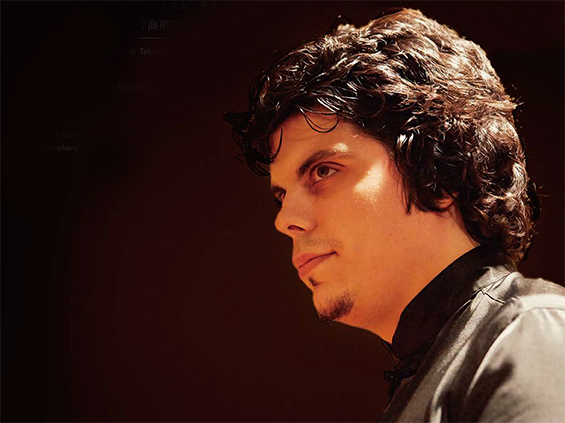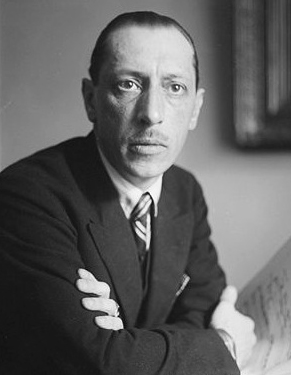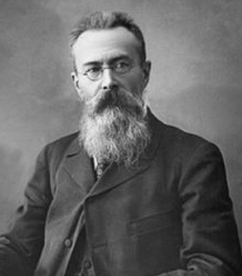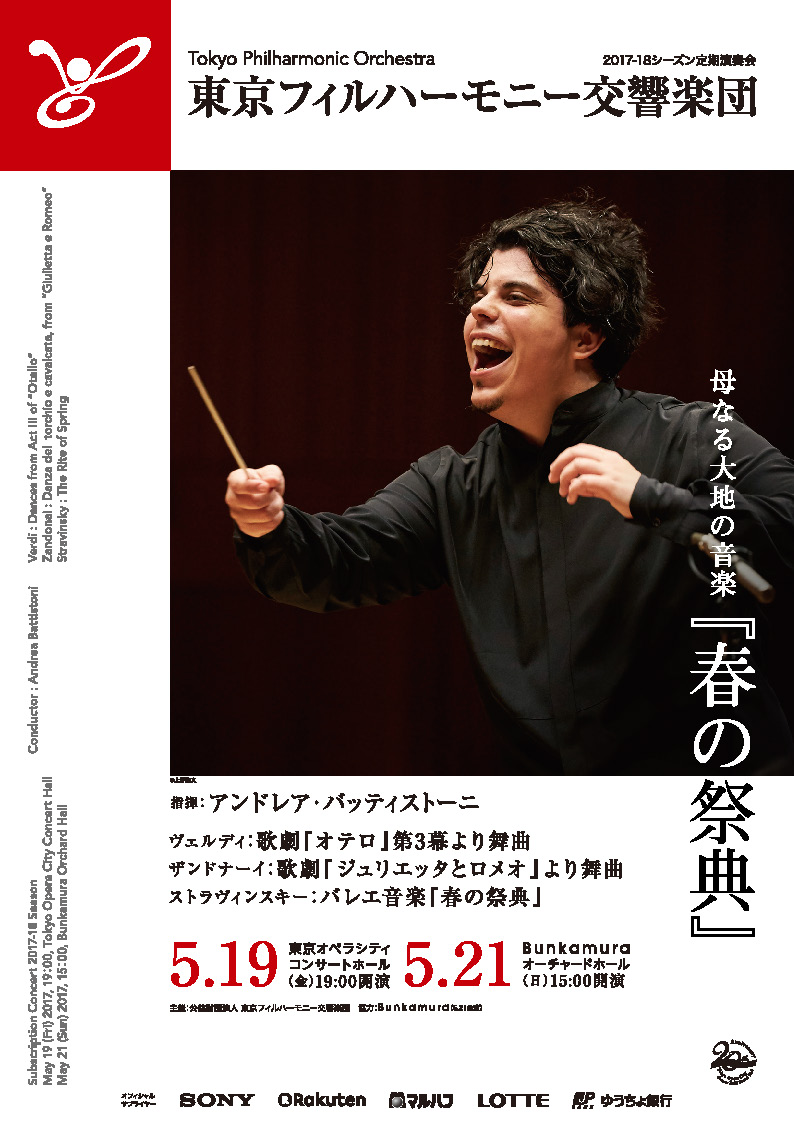

Andrea Battistoni, Chief Conductor
The Rite of Spring is a capital work in the history of music, a true milestone, capable of marking a “before” and “after”.
Few other works have been able to stand out in the path of Western music with the same power fostering developments and revolutions: perhaps only Symphony No. 3 by Beethoven, the Symphonie fantastique by Berlioz, Wagner’s Tristan, the Pierrot Lunaire by Schoenberg.
Stravinsky’s masterpiece reveals itself to the world in 1913 to cast a spell that is still felt to this day by audience and musicians, but even more by contemporary and future composers, who would be dazzled by the extremely original solutions the Russian composer devised to get rid–as in a wing blow–of late Romanticism and the cage of tonality and rhythm as had been known to that day.
Outrageous and very difficult piece to perform at the time, the Rite of Spring is now a repertoire piece, that the audience seems to have accepted in the canon of thrilling yet and yet familiar masterpieces (we should maybe thank Walt Disney and the dinosaurs of Fantasia for that).

Igor Stravinsky
I think it would be interesting to ask ourselves the reason for this success, a favour of the public that exceeds the mediatic popularity of the character Stravinsky, who moved the United States and became the celebrated genius of music, with a series of TV features and studio recordings that helped him and his work become popular.
Firstly, The Rite appears to provide the ideal solution to the lively debate on the survival or decline of tonality that dominated in various forms the beginning of the 20th century. For the young Stravinsky, tonality remains an unavoidable starting point: he is far from Schoenberg’s utopia of a new atonal or dodecaphonic system that would make us breath “air from another planet”, as the soprano voice of Cassandra sung in in Quartet op.10.
Stravinsky’s roots dig gloriously in the tradition of the Russian school, especially in the example of his teacher Rimsky-Korsakov: lush melodies with oriental taste adorned by the most beautiful orchestral palette and embellished by bold harmonies perfectly carved in a consciously tonal environment.

Nikolai Rimsky-Korsakov
This stands for the Firebird and even for the cubist folklore of Petruschka, with its bitonal episodes that accompany folk tunes arranged in an updated version of the style of the Mighty Handful.
Starting from these grounds, Stravinsky approaches the scene of The Rite ballet, with the precise aim of paying homage to his homeland by re-inventing the world of pre-Christian and pagan Russia by digging into collections of melodies and tunes of Ukrainian and Balkan folklore for inspiration and visions.
“Let’s go back to the ancient: it will be a progress”, the great maestro Giuseppe Verdi used to say in the previous century. No other composer seems to have taken him as seriously as Stravinsky in his attempt to build a bridge between the material and gestures of primordial music-making and the research of solutions for the aesthetics and compositional style of the future.
This is why The Rite is so important: Stravinsky instantly wipes out any ideological or stylistic controversy, by producing out of his own imagination the solution to any debate about the evolution of high musical language, in an ideal union of unconscious remembrances and mastery.
Flavio Parisi / Italy to English translation
Italian diction professor at Senzoku College of Music, as well as Italian language teacher at Italian Culture Institute and Opera lecturer at Shukutoku University. He graduated in Oboe at the Music Academy in Udine, under Maestro Pellarin. He has worked as Italian language coach for Tokyo Nikikai Opera Foundation and is active as musician in Tokyo and Italy.
Next Concert
The 109th Subscription Concert in Tokyo Opera City
May 19, 2017, Fri 19:00 start
Tokyo Opera City Concert Hall
The 892nd Subscription Concert in Bunkamura
May 21, 2017, Sun 15:00 start
Bunkamura Orchard Hall
Conductor: Andrea Battistoni
(Chief Conductor of the Tokyo Philharmonic Orchestra)
Verdi: Dances From Act III of “Otello”
Zandonai: Danza del torchio e cavalcata, from “Giulietta e Romeo”
Stravinsky: The Rite of Spring
Presented by Tokyo Philharmonic Orchestra
Supported by ![]() the Agency for Cultural Affairs Government of Japan
the Agency for Cultural Affairs Government of Japan
In Association with Bunkamura (only May 21)













![BUY TPO TICKETS [03-5353-9522] Business hours: 10:00~18:00 Regular holiday: Sat・Sun・Holiday](../../img/common_en/bnr_inquiry2.png)
